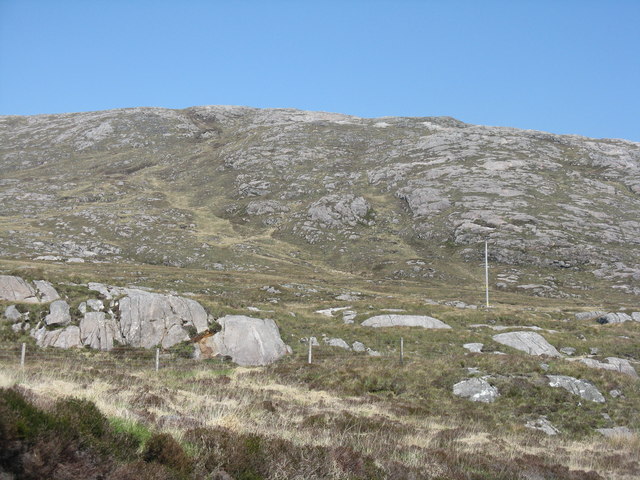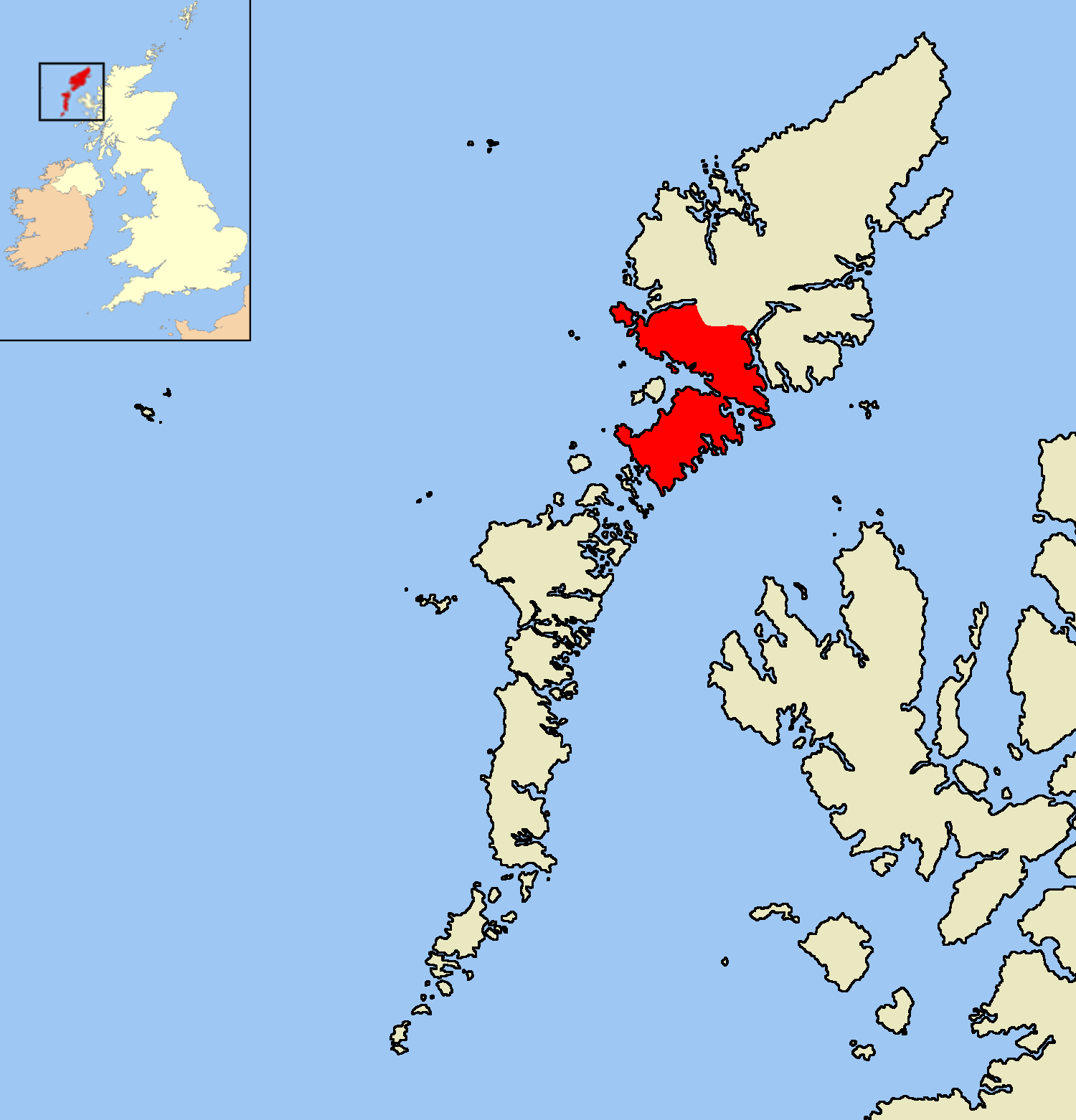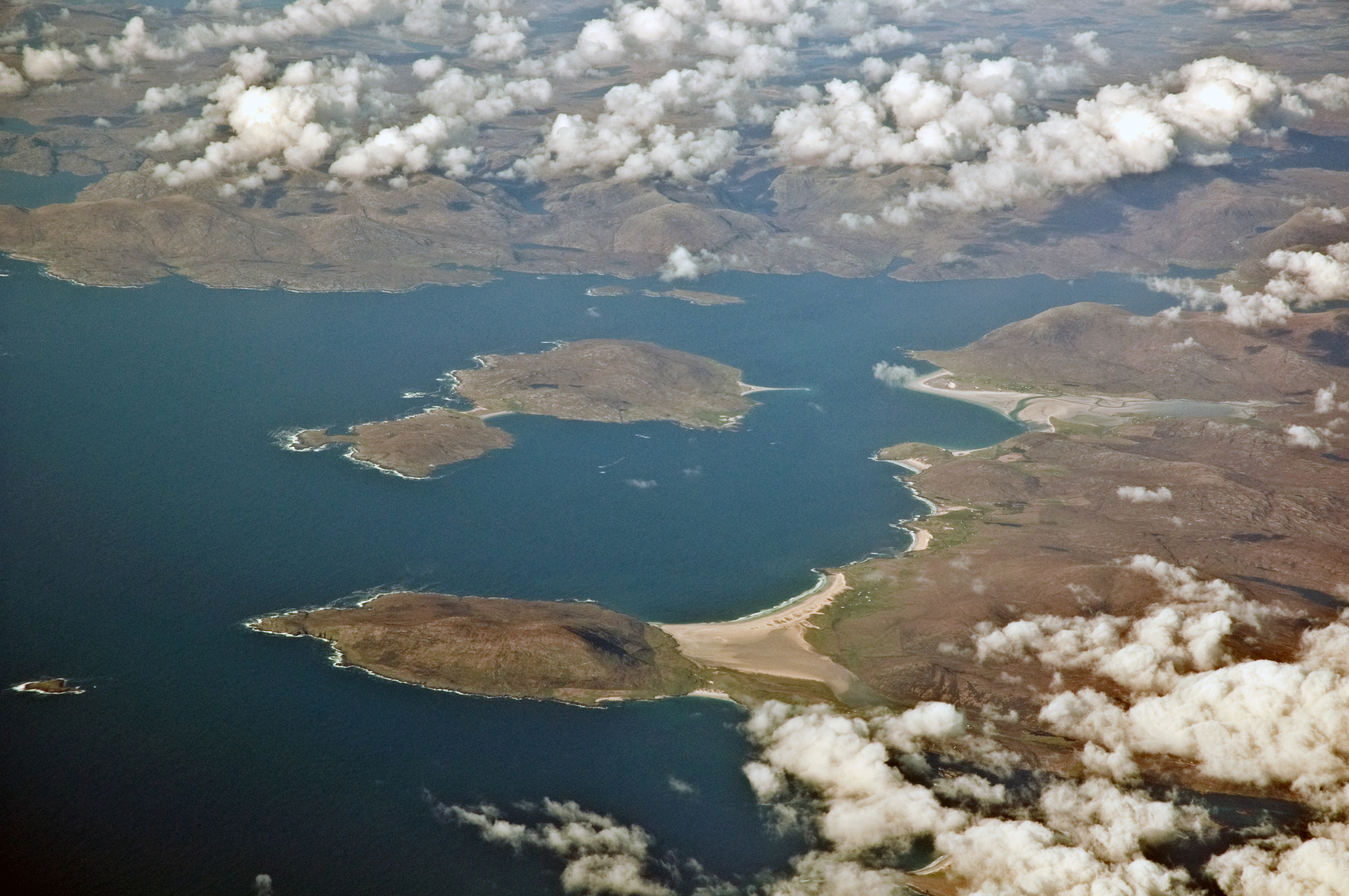Rubha Dubh
Coastal Feature, Headland, Point in Inverness-shire
Scotland
Rubha Dubh

Rubha Dubh, located in Inverness-shire, Scotland, is a prominent coastal feature known for its stunning headland and point. Situated on the western coast of the Scottish Highlands, Rubha Dubh offers breathtaking views of the surrounding landscape and the vast Atlantic Ocean.
With its rocky cliffs and rugged terrain, Rubha Dubh is a haven for nature enthusiasts and hikers. The headland boasts an impressive elevation, providing visitors with panoramic vistas of the ocean and the distant horizon. The jagged coastline is adorned with lush vegetation, including heather and wildflowers, adding to the area's natural beauty.
The point at Rubha Dubh is a popular spot for birdwatching, as it serves as a nesting ground for various seabirds. Visitors can spot species such as gannets, fulmars, and shags, among others, effortlessly gliding through the air or perched on the cliff edges. The coastal waters surrounding Rubha Dubh are also known for their abundance of marine life, making it an ideal location for fishing and diving enthusiasts.
Apart from its natural attractions, Rubha Dubh is steeped in history. The area is scattered with remnants of ancient settlements and archaeological sites, giving visitors a glimpse into the lives of the people who once inhabited this rugged coastal region.
In summary, Rubha Dubh is a captivating coastal feature in Inverness-shire, boasting a breathtaking headland and point. With its stunning views, diverse wildlife, and rich history, it is a must-visit destination for nature lovers and history enthusiasts alike.
If you have any feedback on the listing, please let us know in the comments section below.
Rubha Dubh Images
Images are sourced within 2km of 57.870123/-6.9068992 or Grid Reference NG0997. Thanks to Geograph Open Source API. All images are credited.

![Lugworm casts at Luskentyre Lugworms [polychaete worms - Arenicola marina] live in U-shaped, mucus lined burrows in sand. The depressions in the sand mark the entrance to a burrow, where sand is taken in; after processing to extract nutrients the sand is excreted as a cast at the other end. They occurred in abundance in the sands near the head of the Luskentyre estuary <a href="https://www.geograph.org.uk/photo/4991983">NG0897 : Frith Losgaintir</a>.](https://s1.geograph.org.uk/geophotos/04/99/19/4991997_36337cfe.jpg)

Rubha Dubh is located at Grid Ref: NG0997 (Lat: 57.870123, Lng: -6.9068992)
Unitary Authority: Na h-Eileanan an Iar
Police Authority: Highlands and Islands
What 3 Words
///extremely.conductor.without. Near Tarbert, Na h-Eileanan Siar
Nearby Locations
Related Wikis
Luskentyre
Luskentyre (Scottish Gaelic: Losgaintir) is a sparse settlement on the west coast of Harris, in the Outer Hebrides, Scotland. Luskentyre is situated within...
Borve, Harris
Borve (Scottish Gaelic: Na Buirgh) is a village in Harris in the Outer Hebrides, Scotland. Borve is also within the parish of Harris, and is on the A859...
Harris, Outer Hebrides
Harris (Scottish Gaelic: Na Hearadh, pronounced [nə ˈhɛɾəɣ] ) is the southern and more mountainous part of Lewis and Harris, the largest island in the...
West Loch Tarbert
West Loch Tarbert (Scottish Gaelic: Loch A Siar) is a sea loch that separates the northern and southern parts of Harris in the Outer Hebrides of Scotland...
Nearby Amenities
Located within 500m of 57.870123,-6.9068992Have you been to Rubha Dubh?
Leave your review of Rubha Dubh below (or comments, questions and feedback).





![Marks in the sand at Luskentyre Caused by the siphons of a bivalve mollusc, the Peppery Furrow Shell [Scrobicularia plana]. Digging down would reveal the animals at the centre of the radiating depressions left by the inhalant and exhalant tubes.](https://s1.geograph.org.uk/geophotos/04/99/20/4992013_70e94a49.jpg)











